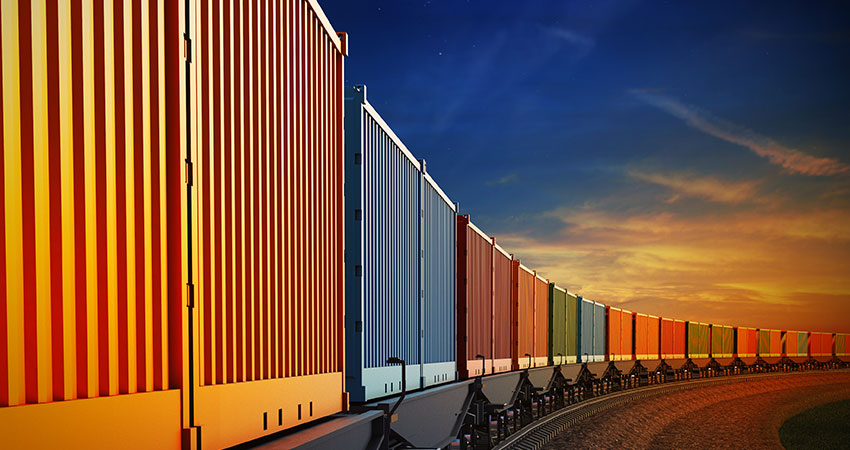A growth in intermodal transportation by rail from coastal ports is leading to increased development of distribution facilities near so-called inland ports in locations like Chicago, Atlanta, Dallas, Salt Lake City, eastern Pennsylvania and Kansas City, according to a new report from commercial real estate firm JLL.
This is also driving greater supply chain efficiency for shippers, who are moving more goods faster via nonstop “hot trains” from ocean ports such as Los Angeles/Long Beach, New York/New Jersey, Seattle/Tacoma and Savannah, GA. They are also saving on drayage fees by building or using mega facilities close to the inland ports. It also helps to address the ongoing shortage of truck drivers that is impacting available capacity for shippers.
“These inland ports, serviced by the ocean ports, are all strategically located in areas of dense population,” said George Cutro, director of research for JLL. “Multi-modal allows for much quicker movement of goods and alleviates traffic on the roads.”
Cutro added JLL is seeing a “huge explosion” in spec development of mega facilities near burgeoning inland ports, whereas in many other major distribution hubs available space is constrained.
“As freight costs go up and delivery time or service requirements become more compressed, we expect that many companies will have a tendency to locate more distribution facilities closer to their end customers and will also strongly consider shifting additional volume onto rail,” JLL stated in its report.
Cutro said that instead of fighting for business, rail and trucking companies are cooperating to move goods more efficiently by intermodal.
“It’s a lot cheaper to take goods off a ship at LA/Long Beach and move them to a Chicago intermodal yard, using thousands of rail cars, then onto a truck and to the end user,” he said. “By long haul trucker it’s more expensive and can take four to seven days, instead of two to three days by rail. And the railroads have prioritized these trains, moving others onto a siding to let them through.”
There are about 175 class 1 intermodal facilities in the U.S., according to JLL, with the major players being Norfolk Southern (53), Union Pacific and CSX (40) and BNSF (28). In addition to the major markets listed above, intermodal hubs are also cropping up throughout the eastern seaboard, Texas and the southwest.
While a typical intermodal facility used to service an area within a 500-mile radius, demand has shrunk that to sometimes 150 miles, Cutro said.
Population shifts are expected to create opportunities for intermodal development in markets like Winter Haven, FL, Greer, SC, Chatsworth, GA, Salt Lake City, Denver and Reno, according to JLL. Also, FedEx and UPS are both expanding their intermodal networks to meet demand, the report stated.

